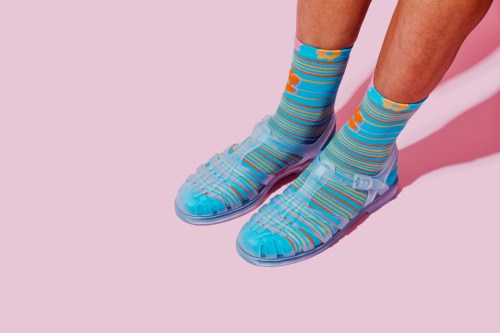When warmer weather hits, sandals get their fair share of use. Sometimes this can be to your detriment, though, given the flatness, firmness, and general lack of support that many sandals offer. It’s not unusual to find that your favorite “comfy” sandals are actually beginning to cause a little bit of foot pain. To prevent sandal-related foot pain and make the best seasonal shoe purchase of the season—there are some ideal features to look out for in a pair of sandals.
Experts in This Article
board-certified podiatrist and CEO of Northern Illinois Foot &
Sandals tend to bend in the middle, says Patrick McEneaneny, DPS, owner, and CEO of Northern Illinois foot-specialists. “When the midsole bends a lot, it increases the pressure load to the ball of your foot and toe joints.” Constant pressure on those areas can cause joint pain in the toes, ankle, or up your leg—depending on the person. Additionally, flimsy sandals don’t offer stability and, when wet, can make you more prone to tripping or falling.
So what should you do? There are podiatrist-approved sandal features you can employ to keep your dogs from barkin’ the minute you stroll in some sandals.
4 sandal features that can help protect you from foot pain
1. Material that supports and cushions your feet
“I rarely say a sandal is a good sandal,” Dr. McEneaney admits. But as far as sandals go, Birkenstocks, or other cork sandals, can be better for specific foot types than regular, nonsupportive sandals. This is because they can offer support to your foot more than sandals that are flat, hard, and/or very thin. A cork, or thick sole of some kind, can also offer shock absorption, which is essential for protecting your heels and plantar fascia from repeated impact.
Avoiding excessive stiffness in the material is also really important, according to Alissa Kuizinas, DPS, a board-certified podiatrist specializing in holistic and functional foot health. When a shoe sole is too rigid and stiff, it can be really hard on the muscles of the foot and cause pain over time.
2. A cupped heel for stability
Regular shoes help keep your feet secure and contained. When you have a sandal that has no barriers between the sides of your foot and the ground, you can twist your ankle, trip, slip your heel out of your shoe, or hurt your feet with the pressure of hitting the pavement, Dr. McEneaney explains. Sandals with a dip in the heel are a great feature because they offer some support and stability, Dr. McEneaney says.
3. Thick, varied, straps that disperse pressure
Strap placement is also important to consider, Dr. McEneaney says. If you think about physics—you want straps that are wide and spread out on your foot’s surface. Flip flops are some of the worst offenders because they often have high, thin straps near your toes. Just like the way a messenger bag centralizes all of the weight of the bag on that one strap, the strap of your shoe puts weight on your foot. When you have wider, more evenly dispersed straps, the force of your walking can be spread evenly throughout your foot.
When you have a thinner and singular strap, it can put a lot of force on that one area. This is not ideal because you want the pull of the shoe to be evenly distributed through the foot.
A heel strap is also beneficial for preventing the shoe from falling off and keeping your shoe secure.
4. Proper fit
Last, but certainly not least, is the importance of wearing shoes that fit you properly. Wearing shoes that are the wrong size can cause foot pain and injury. If the heel of your sandal is too small, the straps feel really tight, you get a lot of blisters consistently, or the shoe feels like it’s too loose or too tight—pop into a shoe store and have them measure your foot. Having accurately fitting shoes is one of the most important ways to prevent injuries and pain.
These tips can help stave off sandal-related foot pain while still allowing you to wander in style. Keep these features in mind when making a seasonal sandal purchase—your feet will definitely thank you for it.
Oh hi! You look like someone who loves free workouts, discounts for cutting-edge wellness brands, and exclusive Well+Good content. Sign up for Well+, our online community of wellness insiders, and unlock your rewards instantly.
Sign Up for Our Daily Newsletter
Get all the latest in wellness, trends, food, fitness, beauty, and more delivered right to your inbox.
Got it, you've been added to our email list.











